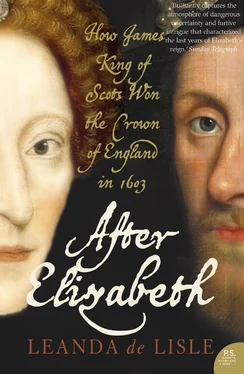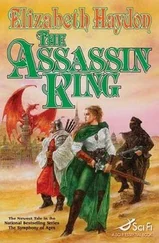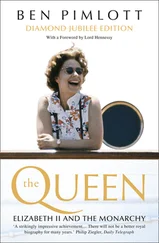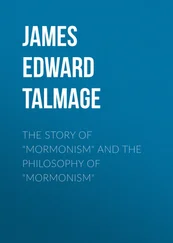But Ralegh’s actions were not all about politics. He was also keen to make money and Cobham, whom Elizabeth had employed to negotiate for peace with the Archduke’s emissary the Count of Aremberg since 1597, was easy to manipulate. In the event, however, the negotiations came to nothing and Ralegh only succeeded in losing Cecil’s trust.
The first indication of Secretary Cecil’s anger came in 1601. After Cecil’s wife died in 1598, the Raleghs had often taken care of his son, William. The boy adored Ralegh, whom he called his ‘captain’, but he was now taken away from their home for good. Cecil, however, was careful to disguise his ill will towards his erstwhile allies: ‘in show we are great’ he told a friend, ‘and all my revenge shall be to heap coal on their heads’. 60 Cobham and Ralegh were therefore shocked to find that their names were not amongst those invited to join the Privy Council in the summer, though Ralegh still hoped that he would be made a Councillor when Parliament opened in November 1601. 61 Just before then an opportunity arose for the two friends to make contact with James, as Cecil had done. 62
James’s latest envoy Ludovic Stuart, Duke of Lennox, son of his beloved Esmé, had arrived at Dover. Cobham, as Warden of the Cinque Ports, was there to attend on him. He seized the opportunity to express to Lennox his wish to forward James’s claim, but unfortunately he then boasted about it to Cecil who, after listening to his excitable brother-in-law, delivered an icy warning. He told Cobham that if James informed Elizabeth of what he had done he would be in terrible trouble. Cobham protested that he had only spoken from excessive zeal, to which Cecil piously retorted that he hoped the Queen would outlive him and that no dealings with James would thus be necessary. Cobham and Ralegh were desperate to retain the Queen’s favour, which appeared to be mysteriously evaporating, and it was a shaken Cobham who relayed Cecil’s words to Ralegh. He fell straight into the Secretary’s trap. Instead of pursuing Lennox, Ralegh told Cecil that Lennox had approached him, but that he had told him that he was ‘too deeply engaged … to his own mistress’ to seek favour elsewhere. 63 Come November, however, Ralegh still did not have a place on the Privy Council and it was an embittered figure that took his seat in parliament that month.
As Cecil spelt out Elizabeth’s requests for subsidies to support the war in Ireland to parliament, Ralegh made sarcastic interventions. Infuriated, Cecil resolved to blacken Ralegh and Cobham’s names with James, telling Howard these ‘two hedgehogs … would never live under one apple tree’ with him. 64 Howard was happy to do the dirty work and the Scottish King was soon complaining about the ‘ample, Asiatic and endless volumes’ that Howard sent him on the wickedness of Ralegh, Cobham and a third figure, an old friend of Ralegh’s, Henry Percy, the ninth Earl of Northumberland. ‘You must remember,’ Howard wrote on 4 December 1601, ‘that I gave you notice of the diabolical triplicity that is Cobham, Ralegh, and Northumberland, that meet every day at Durham house …’ He claimed they had hatched a plan, that ‘Northumberland … a sworn enemy to King James’, should pretend to Cecil that he supported his candidature. This ploy had failed, Howard continued, so Northumberland had told his wife: ‘He had rather the King of Scots was buried than crowned.’ 65
Northumberland’s marriage to one of Essex’s sisters was an unhappy one and it seems she was content to betray her husband’s confidences – or even to invent stories against him – and she wasn’t the only wife to do so. Howard found another useful instrument in Cobham’s wife, the widowed Countess of Kildare. Born Frances Howard, she was the daughter of Cecil’s ally the Earl of Nottingham and had married Cobham in 1600 – as the tenth richest man in England he had one obvious attraction to an ambitious woman. Like several other Howard women of the day, Lady Kildare (it was usual to keep the name of your first husband in cases where the first husband’s title was superior) was beautiful but scheming, and she had a reputation as a vicious gossip. Essex had once labelled her ‘the spider of the court’, and whether she intended to harm her husband or not, she provided Howard with plenty of ammunition against him, complaining that he and Ralegh frequently railed against James’s title. Cecil’s letters to James supported Howard’s efforts, praising the ‘wisdom and sincerity’ of ‘faithful 3 [Howard]’, and assuring James that if he did not ‘cast a stone into the mouths of these gaping crabs [Cobham and Ralegh] they would not stick to confess daily how contrary it is to their nature to resolve to be under your sovereignty’. 66
As James absorbed these missives, Howard began to suggest to Cecil ways in which Ralegh and Cobham might be finished. Elizabeth was extremely anxious about the unpopularity of her government and Howard suggested that she be encouraged to be suspicious of Cobham and Ralegh and ‘taught the peril that grows unto princes by protecting, countenancing or entertaining persons odious to multitudes.’ 67 Ralegh and Cobham soon felt the deepening royal chill and struggled to retrieve the Queen’s good opinion, on one occasion complaining to Elizabeth that the prisoners from the Essex revolt were being treated too leniently and on another drawing up a paper supporting her decision not to name an heir. 68 Such actions took them further from any hope of James’s favour and Howard intended that in the longer term other matters could be used against them. Howard had discovered that Cobham and Ralegh had decided to divide their labours so that if the policy of peace with Spain prospered Cobham would benefit, if war, then Ralegh. Howard hoped that Spain could be used to bring them both down: ‘The glass of time being very far run, the day of the queen’s death may be the day of their doom’ he wrote to Cecil in June 1602. 69 Northumberland, however, was going to prove more difficult to destroy.
The thirty-eight-year-old Northumberland was an unconventional figure with an equally unconventional background. His father, Thomas Percy, the eighth Earl, had faced execution for his involvement in the 1569 revolt of the Northern earls, but was found dead in his cell from gunshot wounds. It was said to be a suicide, although some had suspected murder. Either way his escape from the executioner saved his vast estates from being forfeited to the crown under the rules of attainder, and young Northumberland inherited land stretching over eight counties across England and Wales. His immense wealth had allowed him to stand apart from the Cecil and Essex factions during the 1590s, which was as well since he cared for neither of them. He saw Cecil, who was descended from Welsh farmers, as a social upstart, and felt no commensurate warmth for Essex whose enemy, Ralegh, shared his interests in navigation, astronomy and mathematics.
Science was a risky area for study at a time when it was confused with magic and Howard had deliberately laced his letter to James with references to diabolic meetings at Durham House to stir up James’s horror of the occult. To Howard’s dismay, however, James was anxious to gain the support of a man who might otherwise have blocked his route south and in the winter of 1602/3 they were in close contact. Northumberland used his links with James to defend Cobham and Ralegh from accusations of disloyalty to James’s cause, but he did not to wish to be too closely associated with them and told James that Ralegh ‘will never be able to do you much good nor harm’: in other words, that he was expendable. Northumberland had a much bigger agenda than Ralegh’s career to consider – the cause of toleration of religion. While Northumberland was content to conform in religious matters, Catholicism remained strongly rooted in the north of England where he had most of his land base and he saw himself as a natural protector of Catholics.
Читать дальше












